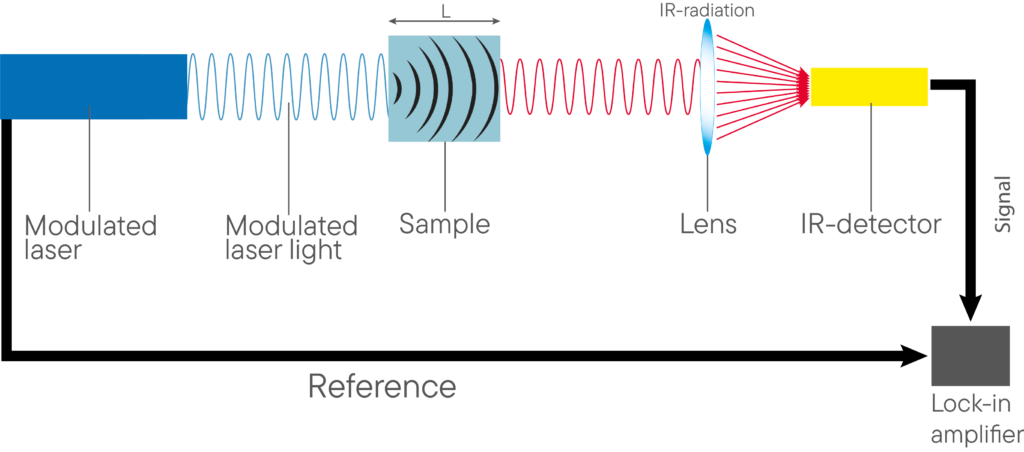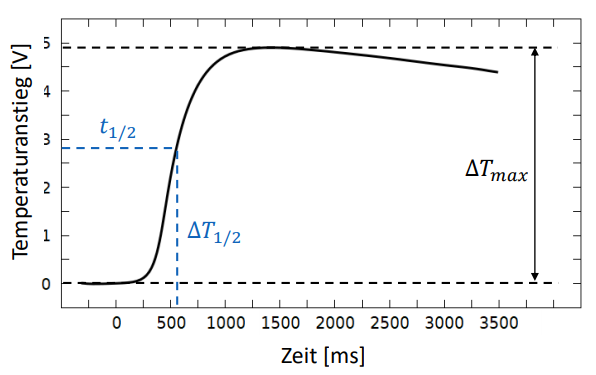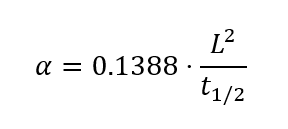The Flash Method
The Flash Method
The Flash Method is a method for the determination of the thermal diffusivity of different materials.
For that, the sample is subjected to a high intensity short duration radiant energy pulse. The power source can be a laser or a flash lamp. The energy will then be absorbed by the specimen and emitted again on the top of the sample. This radiation results in a temperature rise on the surface of the sample. This temperature rise is recorded from an infrared (IR) detector.
The schematic measurement setup and procedure is shown in the following figure.

The detector signal shows the duration of the measurement and the normalized temperature rise on the surface of the sample, where the light pulse occurres. For the calculation of the thermal diffusivity, it is necessary to determine the baseline and the maximum temperature rise. This is done by a suited fitting model. Additionally, the model determines the time at which half of the maximum temperature raise was reached.

The thermal diffusivity is calculated with the following formula where describes the sample thickness and the half time rise.

This formula is derived from the physical model of the thermal behavior of an adiabatic slab of material with a constant thickness, which was irradiated at a constant temperature with a short energy pulse. Here different assumptions are made, which differ from reality. These deviations from reality are considered in the fitting models and include a finite pulse length of the power source and the heat loss of the sample to the vicinity.
By knowing the density and the specific heat capacity of the sample, the thermal conductivity can be calculated with the following equation.

Here it needs to be considered, that the parameters are temperature dependent. Thus, a measurement of these properties in dependence of the temperature is necessary for the characterization of the material.
The advantages of the Flash Method are rapid and non-destructive measurements of low to high conductive samples. Furthermore, the required specimen geometry is simple and small samples with an easy preparation can be investigated.
Which properties are determined with Flash method?
The Flash Method determines the thermal diffusivity. Using a suited reference material, it is also possible to measure the specific heat capacity in a comparative method. The thermal diffusivity, specific heat capacity and the density can then be used to calculate the thermal conductivity.
Properties:
- Thermal diffusivity
- specific heat capacity
- density
Which norms count for the Flash Method?
- ASTM E1461 – Standard Test Method for Thermal Diffusivity by the Flash Method
- ASTM E2585 – 09(2015) Standard Practice for Thermal Diffusivity by the Flash Method